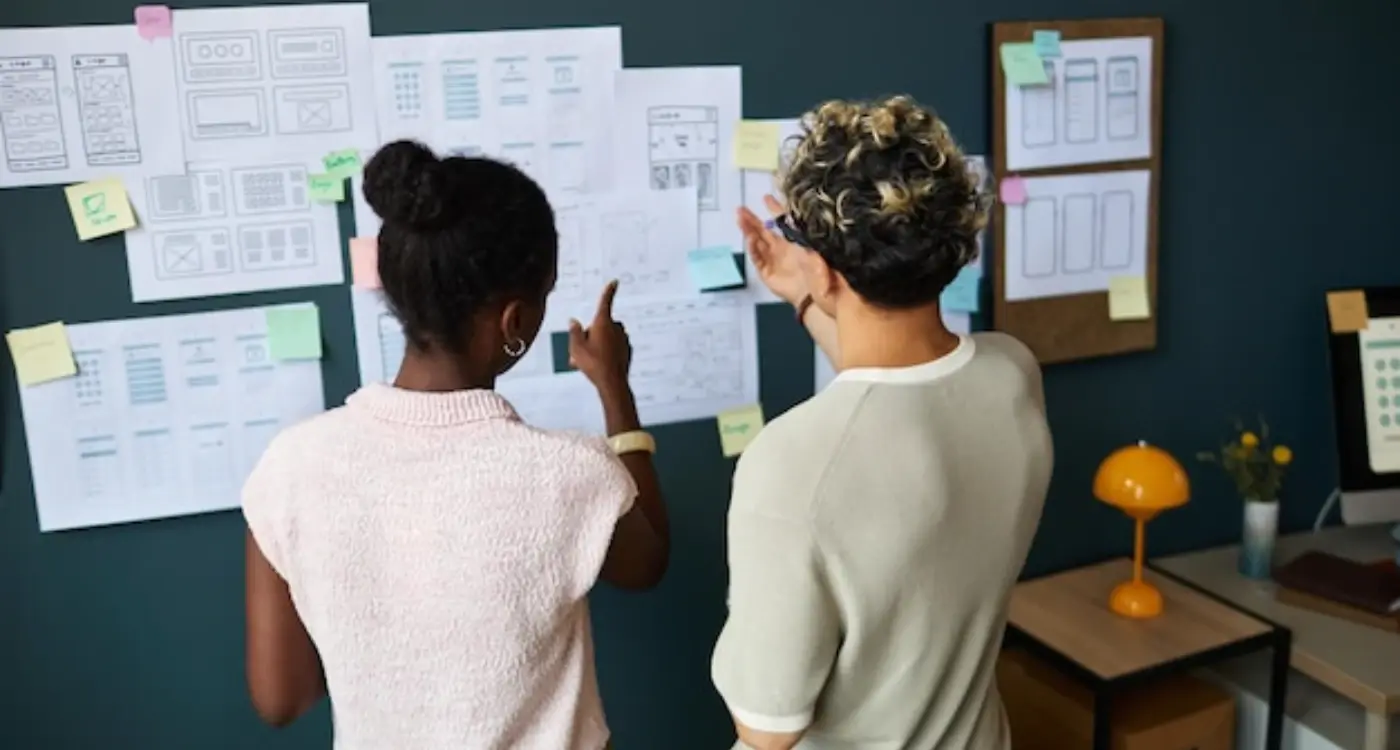How Do I Turn User Research Into App Design Decisions?
User research sits at the heart of every successful app I've built over the years, but here's the thing—most developers collect loads of research and then struggle to turn it into actual design decisions. I've seen teams spend weeks interviewing users, running surveys, and analysing behaviour data, only to end up with a pile of insights they don't know how to use. It's a bit mad really, because the research is only valuable if it changes what you build.
The gap between research insights and design decisions is where many app projects go wrong. You might discover that users find your navigation confusing, but how does that translate into a specific design change? Or maybe your research shows that people abandon the signup process halfway through—what exactly should you do differently? These are the questions that keep app teams stuck, and honestly, I get why it's confusing.
The best apps aren't built on assumptions—they're built on understanding what users actually need, not what we think they need.
What I've learned from years of turning research into real apps is that there's a systematic way to bridge this gap. Its not about having perfect research or brilliant design instincts; it's about having a clear process that connects user behaviour to design choices. When you get this right, every design decision becomes easier to make and defend. You stop guessing what users want and start building what they actually need.
Understanding Different Types of User Research
Right, let's talk about the different types of user research—because honestly, there's more variety here than most people realise. I've been doing this for years and I still see clients getting confused about which type of research they actually need for their app project.
The main thing to understand is that user research falls into two big buckets: qualitative and quantitative. Qualitative research tells you the "why" behind user behaviour—think interviews, usability testing, and focus groups. Quantitative research gives you the "what" and "how much"—that's your analytics, surveys with lots of respondents, and A/B testing data.
Primary Research Methods
- User interviews - One-on-one conversations that reveal deep insights about user motivations
- Surveys - Great for collecting opinions from hundreds or thousands of users quickly
- Usability testing - Watching real users interact with your app or prototype
- Analytics analysis - Mining your existing app data for behaviour patterns
- Field studies - Observing users in their natural environment
- Card sorting - Understanding how users mentally organise information
Here's the thing though—you don't need to do every type of research for every project. That would be mad, not to mention expensive! The key is matching your research method to the questions you're trying to answer. If you want to know why users are dropping off at a specific screen, usability testing will give you better insights than a survey.
I always tell my clients to start with the research questions first, then pick the methods that will actually answer those questions. It sounds obvious, but you'd be surprised how many people jump straight into surveys because they seem "easier" when what they really need is to sit down and talk to five users face-to-face.
Planning Your Research Strategy
Right, so you've decided that user research is worth your time and budget—good choice! But here's where I see loads of teams go wrong: they jump straight into surveys or interviews without thinking about what they actually need to learn. It's like going grocery shopping when you're starving; you'll end up with a trolley full of biscuits and no proper meals.
The first thing you need to nail down is your research objectives. What specific questions are keeping you up at night? Are you trying to understand why users abandon your onboarding flow, or do you need to figure out which features matter most to your target audience? Write these down—seriously, get them on paper because fuzzy objectives lead to fuzzy results.
Choosing Your Research Methods
Once you know what you're trying to learn, you can pick the right research methods. Each method has its strengths, and honestly, mixing a few usually gives you the clearest picture:
- User interviews for deep insights into motivations and pain points
- Surveys for gathering data from larger groups quickly
- Analytics review to understand current user behaviour patterns
- Usability testing to see how people actually interact with your app
- Competitor analysis to understand market expectations
Budget and timeline matter too, obviously. If you've got two weeks and a tight budget, you're not running a comprehensive ethnographic study. But that doesn't mean your research will be rubbish—sometimes a well-planned week of user interviews tells you more than months of unfocused data gathering.
Setting Success Criteria
Before you start, decide how you'll know when you've learned enough. Maybe it's when you can confidently answer your research questions, or when you stop hearing new insights from participants. Having clear criteria stops you from researching forever—which, trust me, is tempting when you're uncovering interesting stuff!
Always recruit a mix of current users and potential users for your research. Current users tell you what's working; potential users reveal barriers you might not see otherwise.
Collecting and Organising Research Data
Right, so you've done your user interviews, sent out surveys, and watched people struggle through your prototype. Now what? You're sitting there with a mountain of data that looks like absolute chaos. I mean, you've got interview transcripts, survey responses, screen recordings, sticky notes from workshops—it's a proper mess, isn't it?
Here's the thing though: how you organise this data will make or break your ability to spot the patterns that actually matter. I've seen brilliant research go to waste because teams just dumped everything into a folder and hoped for the best. Don't be those people.
Start with a Simple System
First up, create a basic structure that makes sense to your brain. I always start with these categories:
- User goals and motivations
- Pain points and frustrations
- Current workarounds and behaviours
- Feature requests and suggestions
- Technical constraints or limitations
Now, you don't need fancy software for this. A shared spreadsheet works perfectly fine; sometimes the simplest tools are the most effective ones. Create columns for participant details, research method, key quotes, and observations. Actually, key quotes are gold—they'll help you sell your design decisions to stakeholders later.
Tag Everything Consistently
This is where most people mess up. You need consistent tagging from day one. If you call something "navigation issues" in one interview and "menu problems" in another, you'll miss connections. Agree on your tags upfront and stick to them like glue.
One trick I've learned? Include the emotional context alongside the functional stuff. Note when users seemed frustrated, confused, or delighted. These emotional markers often reveal the real story behind the data.
Finding Patterns in User Behaviour
Right, so you've got your user research data sitting there—surveys completed, interviews transcribed, analytics exported. Now comes the bit that separates good app developers from great ones: spotting the patterns that actually matter. I'll be honest, this part can feel a bit overwhelming at first; you're looking at hundreds of data points trying to work out what it all means.
The trick is to start broad and narrow down. I usually begin by grouping similar feedback together—complaints about the same feature, requests for similar functionality, common points where users get stuck. Its like sorting through puzzle pieces; you're looking for the edges first, then building inward. What I've found over the years is that the most important patterns aren't always the loudest ones. Sometimes it's the quiet frustration that shows up in subtle ways across multiple users that reveals the biggest opportunities.
Spotting the Signal in the Noise
Here's what I look for when analysing user behaviour data: frequency (how often does this happen?), impact (how much does this affect the user experience?), and feasibility (can we actually do something about it?). A pattern that affects 80% of your users but would take six months to fix might not be your first priority if there's something affecting 60% that you can solve in two weeks.
The best design decisions come from patterns that reveal what users need, not just what they say they want
Don't get caught up trying to solve every single issue you find. Focus on the patterns that align with your app's core purpose and your business goals. The magic happens when you can connect multiple smaller patterns into one larger insight about user behaviour—that's when you know you're onto something that will genuinely improve your app design.
Turning Research Insights into Design Requirements
Right, so you've got all this research data—user interviews, surveys, analytics, the works. Now what? This is where things get interesting, because transforming insights into actual design requirements is where most projects either soar or crash and burn.
I see teams making the same mistake over and over again: they jump straight from "users said this" to "so we'll build that." But there's a crucial step in between that makes all the difference. You need to translate what users told you into what they actually need from your app.
From Problems to Solutions
Let's say your research shows users are frustrated with checkout processes taking too long. That's not a design requirement—that's a problem statement. The design requirement might be "reduce checkout to maximum 3 steps" or "implement one-click purchasing for returning users." See the difference? One describes the pain point; the other gives your design team something concrete to work with.
Here's how I structure design requirements based on research findings:
- User goal: What the user is trying to achieve
- Current pain point: What's stopping them
- Functional requirement: What the app must do
- Success metric: How you'll measure if it works
Prioritising Requirements
You can't build everything at once—and honestly, you shouldn't try. I use a simple framework: impact versus effort. High impact, low effort requirements go first. These are your quick wins that'll make users happy without burning through your budget.
The key is being ruthless about what actually matters to your users versus what sounds cool in meetings. Your research data should be driving these decisions, not opinions or assumptions.
Making Design Decisions Based on User Needs
Right, so you've got all this brilliant research data and you've spotted the patterns—but now what? This is where things get really interesting because you're about to turn all those insights into actual design decisions that users will interact with every single day.
I'll be honest, this part used to stress me out early in my career. You've got all these research findings pointing in different directions, stakeholders with their own opinions, and technical constraints to consider. But here's what I've learned: the best design decisions come from staying laser-focused on solving real user problems, not trying to please everyone.
Let's say your research shows that 70% of users abandon your checkout process at the payment stage. That's not just a statistic—that's a clear signal that your payment flow needs serious attention. Maybe users are confused by too many payment options, or perhaps the form is too long. The research tells you what to fix; your job is deciding how to fix it.
Always prioritise design changes that solve the biggest pain points for the largest number of users. Small improvements that affect everyone often have more impact than perfect solutions for edge cases.
Turning Insights into Action
Every design decision should directly address a user need you've identified through research. If you can't draw a clear line from your research findings to your design choice, you're probably making assumptions again—and we all know how dangerous those can be!
- Start with your most significant user pain points
- Consider technical feasibility alongside user needs
- Document why you made each decision
- Plan how you'll measure success
Remember, good design decisions feel obvious to users but require careful thought from designers. When users say "why wasn't it always like this?" after you make a change, you know you've nailed it.
Testing Your Design Decisions with Users
Right, so you've turned your research into actual design decisions—but here's the thing, you're not done yet. Actually testing those decisions with real users is where the magic happens, and honestly, it's where I see most teams either nail it or completely miss the mark.
The key is starting small and testing early. I mean, you don't need a fancy usability lab or hundreds of participants. Sometimes the most valuable insights come from watching just five users try to complete a simple task on your prototype. It's a bit mad really how much you can learn from such a small group, but there you go.
When I'm testing design decisions, I focus on specific behaviours rather than opinions. Sure, asking "do you like this button colour?" might make you feel productive, but watching someone struggle to find that button tells you everything you need to know. Actions speak louder than feedback forms, basically.
What to Test and When
Start with your riskiest assumptions—the design decisions that could make or break the user experience. If you've decided to move the main navigation to the bottom of the screen based on your research, test that first. Don't waste time testing minor visual tweaks when fundamental interaction patterns are still unproven.
Quick guerrilla testing works wonders too. Set up a laptop in a coffee shop and ask strangers to try your prototype for two minutes. You'll spot usability issues faster than any focus group, and it costs you nothing but a few awkward conversations and maybe some coffee money.
The goal isn't perfection—it's validation that your research-driven decisions actually work when real people interact with them.
Measuring the Success of Research-Driven Design
Right, so you've done your user research, made design decisions based on those insights, and shipped your app. Job done? Not quite. This is where things get really interesting—and where I see a lot of teams drop the ball, honestly.
The real test isn't whether your research was thorough or your design looks good. It's whether your research-driven decisions actually improved the user experience in measurable ways. I mean, that's what we're here for, right?
Setting Up Your Success Metrics
Before you can measure success, you need to know what success looks like. And here's the thing—it should tie directly back to the problems your research uncovered. If your research showed users were struggling with onboarding, then your success metrics should focus on onboarding completion rates, time to first value, and early retention numbers.
Don't just look at vanity metrics like downloads or page views. Those numbers feel good but they won't tell you if your design decisions are working. Instead, focus on behavioural metrics that reflect real user engagement and satisfaction.
The best research-driven designs don't just solve problems—they solve the right problems in ways that users actually adopt and love
Closing the Research Loop
This is where most teams get it wrong—they treat research as a one-time activity instead of an ongoing conversation with their users. Your app's performance data is just another form of user research; it's telling you whether your insights and design decisions were spot on or if you need to dig deeper.
Track your key metrics for at least 8-12 weeks after launch. Look for patterns in user behaviour that either validate your original research or suggest new areas to explore. Sometimes the data will surprise you—users might love a feature you thought was risky, or struggle with something that tested well in research.
Right, so we've covered a lot of ground here—from collecting user research to turning those insights into real design decisions that actually work. But here's the thing: knowing how to transform research into design isn't just about following a process. It's about developing a mindset where user needs genuinely drive every choice you make.
I've seen too many apps fail because teams treated user research like a box-ticking exercise. They'd do the interviews, collect the data, then basically ignore it when making design decisions. That's mental, really! Your users have just told you exactly what they need; why would you not listen?
The apps that succeed—the ones that people actually want to use and keep using—are built by teams who make user research the foundation of everything they do. Every button placement, every colour choice, every interaction pattern should be justified by what you've learned about your users' needs and behaviours.
And look, this process isn't something you do once and forget about. User needs change, technology evolves, and markets shift. The research-to-design cycle should be ongoing throughout your app's lifecycle. What worked six months ago might not work today.
The good news? Once you get comfortable with this approach, it becomes second nature. You'll start questioning design decisions automatically: "Why are we putting this feature here? What does our research tell us about how users actually behave in this situation?" That's when you know you're thinking like someone who builds apps that people genuinely love using. And honestly, that's the only way to build apps worth making.
Share this
Subscribe To Our Learning Centre
You May Also Like
These Related Guides

What Are the Key Steps in Persona-Driven Design Strategy?

How Do Cognitive Biases Shape User Interface Design Decisions?



